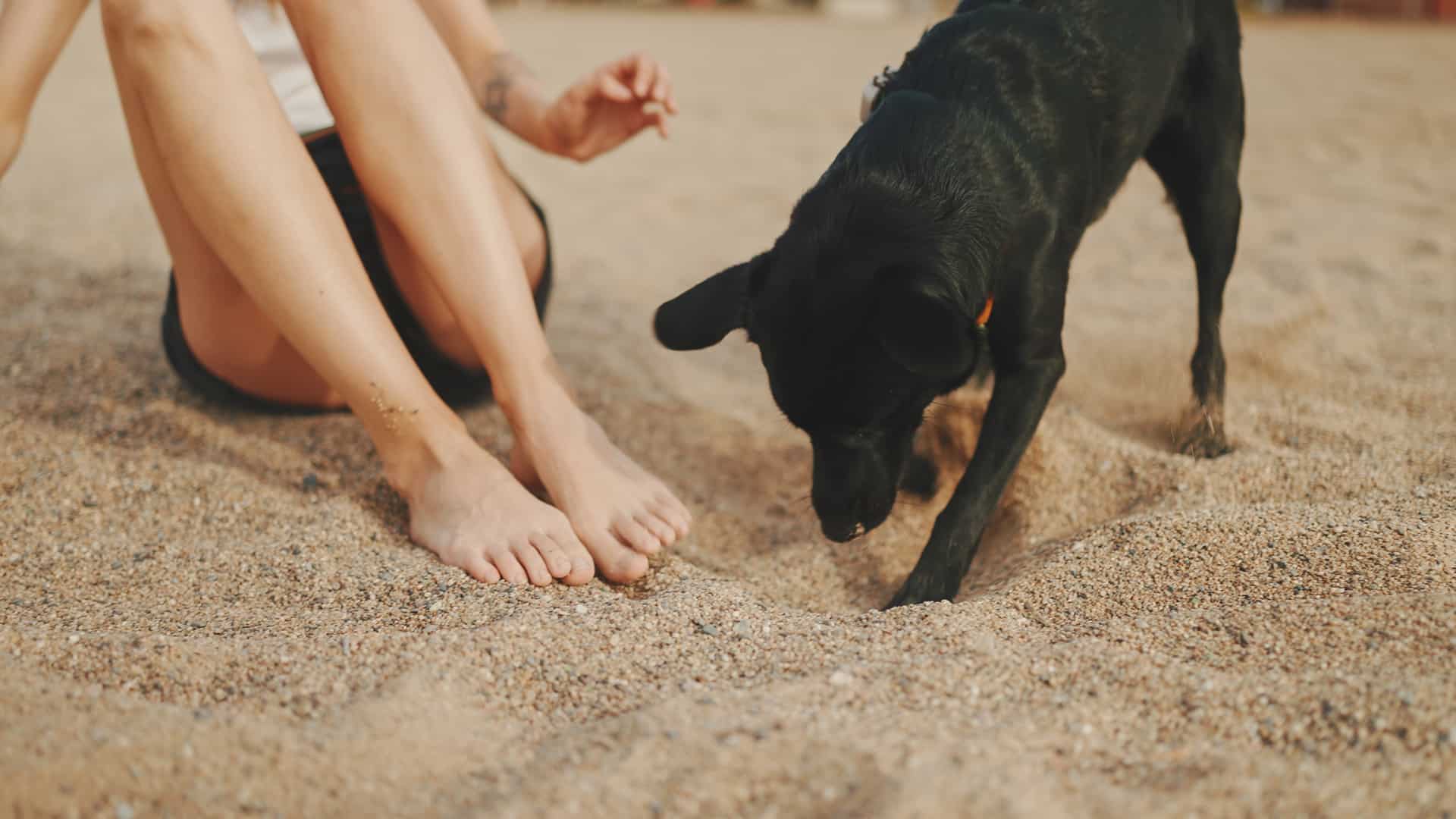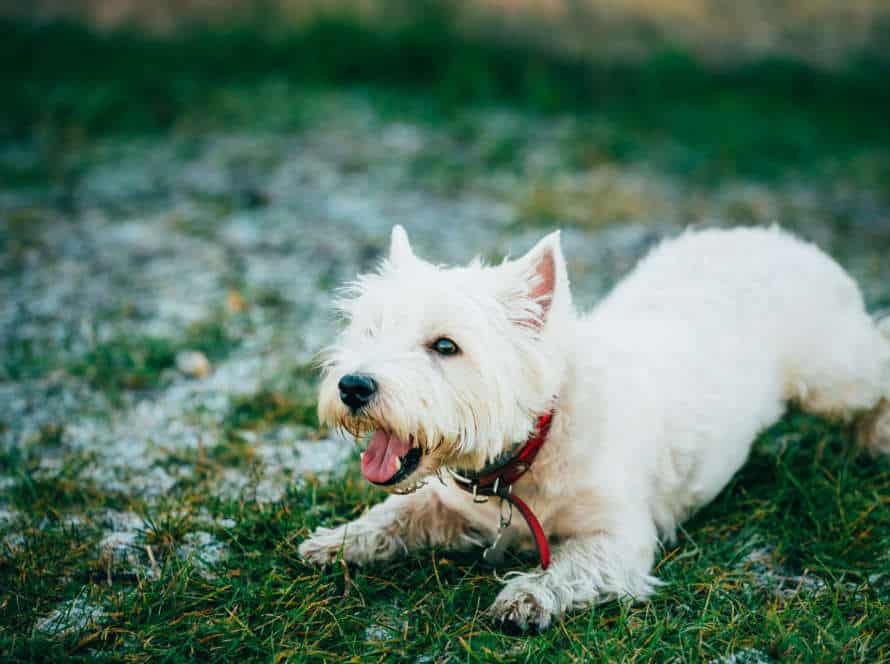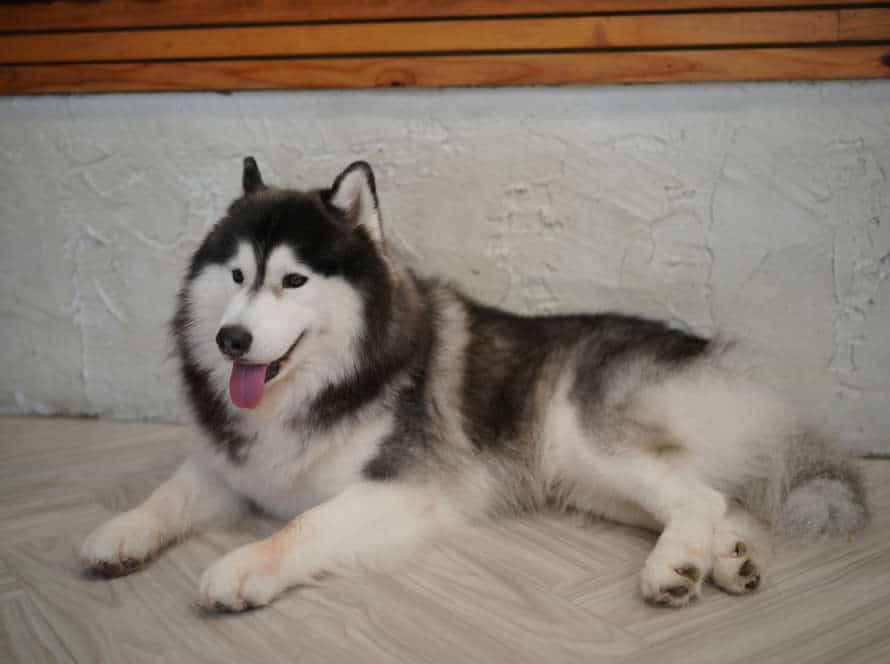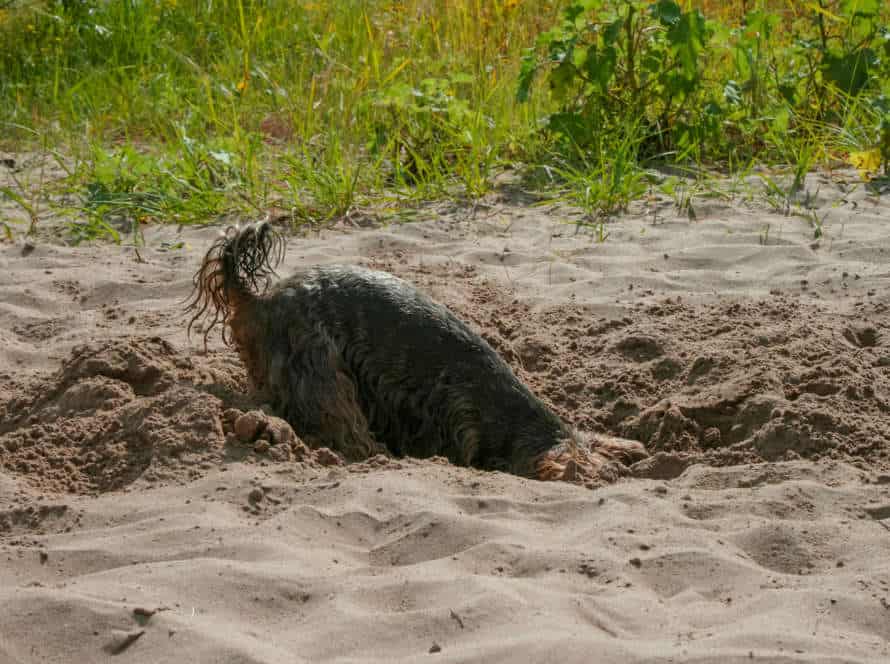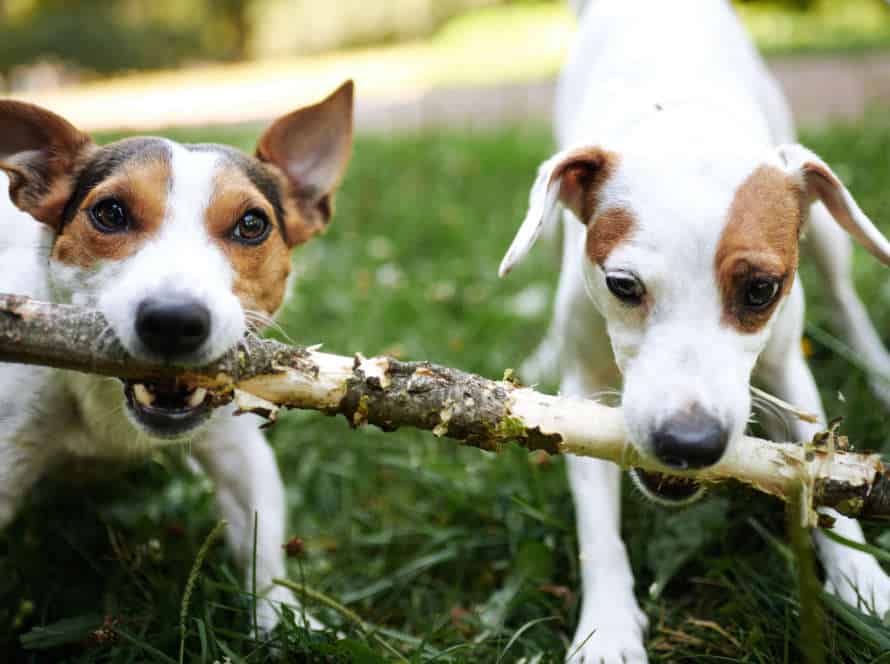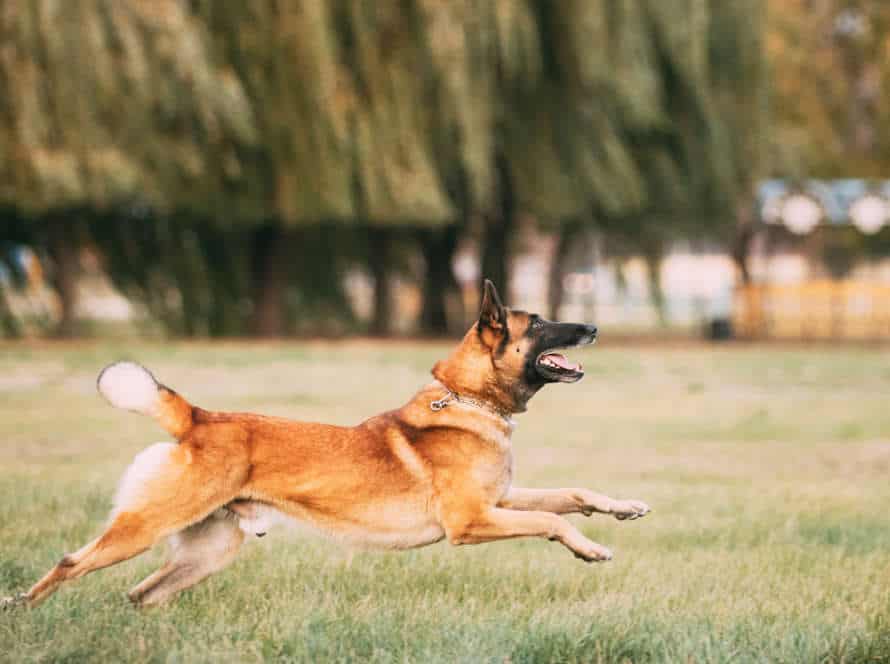The Impact of Prey Drive on Your Dog’s Digging Habits
Prey drive is a natural urge in dogs to hunt, chase, and catch prey. Knowing the effect of prey drive on your pup’s digging can help you better control their behavior and stop damage in your yard and gardens.
Remember these points:
- Dogs with a high prey drive may be more likely to dig, like they are imitating natural hunting.
- Certain dog breeds, such as terriers and dachshunds, tend to have a higher prey drive and dig more.
- Giving your dog enough exercise, mental stimulation, and training can help them redirect their prey drive and stop digging.
- Making a certain digging area for your dog can satisfy their digging urge while protecting your yard and gardens.
- Learning your dog’s prey drive and applying proper training and management techniques can stop unwanted digging, and make a good relationship between you and your pet.
The Link Between Prey Drive and Digging
Prey drive is a common instinct in dogs. It can make them dig and chase small creatures around. Controlling this urge is tricky. But, it can be a great way for your pup to get some exercise. Knowing how prey drive affects their digging can help you manage the behavior. Let’s explore the connection between prey drive and digging more closely.
Understanding Prey Drive in Dogs
Prey drive is an instinct in dogs that makes them chase and catch prey animals. Knowing this can help dog owners manage their pet’s behavior and stop destructive activities like digging.
Prey drive has three levels: low, medium, and high. This shows how intense the dog’s predatory behavior is. All breeds have some prey drive, though some more than others.
Digging can be a type of hunting behavior for dogs with high prey drive. Training these dogs can be difficult as they will dig more often.
Understanding prey drive can help create strategies to train your dog and reduce digging. You could try redirecting their energy with games like fetch and chew toys. This satisfies their natural instincts and reduces their digging.
The Instinct to Dig and Bury Objects
Dogs have a natural instinct to dig and bury objects. That instinct is called prey drive. It’s the natural urge to hunt and capture prey. Digging and burying is a way for dogs to satisfy this prey drive. Terriers were bred to dig for rodents, so they have a strong instinct to do so.
Prey drive affects digging in other ways too. For instance, when a dog sees a squirrel, it may start digging to catch it. Or if it smells something underground, it may instinctively start digging.
If you’re concerned about your pup’s digging habits, consider their prey drive. Provide them with activities that satisfy this instinct, like chasing and fetching games. You could also create a dedicated digging area in your yard, or give them toys designed for digging and burying.
Pro Tip: Knowing your pup’s behaviors and instincts can help you create a great living environment for both of you.
Factors That Exacerbate a Dog’s Prey Drive
A dog’s prey drive is an instinct to chase and hunt prey. It can become worse due to certain factors, leading to digging and other destructive behaviors. Here are a few things that can increase prey drive and digging:
- Genetics: Breeds like terriers and hounds have genetic traits which make them more prone to high prey drive.
- Lack of exercise: Dogs with too much energy may use it for destructive behaviors such as digging, motivated by their prey drive.
- Boredom: When left alone for long, dogs may dig to alleviate boredom.
- Lack of proper training: Obedience training can teach your dog to obey commands, helping to control their prey drive and reduce digging.
- Presence of small animals: When small animals like squirrels and rabbits are around, a dog may be tempted to dig and chase them.
As a dog owner, it is important to understand how prey drive affects your dog and take steps to prevent negative behavior.
Managing Digging Behavior in Dogs with High Prey Drive
Digging is typical for dogs, especially those with a high prey drive. The challenge and reward of finding their ‘prey’ is what motivates them. To manage this behavior, it’s important to know why they’re digging. Here we’ll explore strategies for managing digging in dogs with a high prey drive.
Provide Adequate Exercise and Enrichment
High prey-drive in dogs is a common cause of digging. To manage this behavior and keep your dog happy and healthy, provide exercise and enrichment.
Exercise: Give the right amount and type of exercise for the breed and age. Use interactive toys like frisbees or tug ropes to make it more fun.
Enrichment: Introduce mental stimulation, like puzzles or treat-release toys, to redirect energy away from digging. Provide safe digging areas or sandboxes to satisfy their instinct.
Training: Positive reinforcement training teaches good behavior and discourages digging.
Managing prey drive and digging takes patience. Exercise, enrichment and training will keep your pooch happy and your yard intact!
Offer Appropriate Toys and Chews
Dogs with high prey drive may display digging behavior. Offering toys and chews can be an effective management strategy to stop this. Here’s how:
- Squeaky toys or tug toys can distract them from digging, satisfying their prey drive.
- Chews, such as rawhide or bully sticks, can satisfy their need to chew and occupy them.
- Interactive treat puzzles keep them mentally stimulated.
It is important to supervise your pup when they use toys or chews to prevent choking hazards or other safety issues. Providing the right toys and chews is a great way to manage digging from prey drive.
Teach Basic Commands and Reinforce Good Behavior
If your pup has a high prey drive, the first step to manage their digging behavior is to teach them basic commands. Here’s what to do:
- Get them obedience training or use online tools to teach them sit, stay, come, and leave it.
- Set boundaries – no digging in certain areas of the yard or garden.
- Reward good behavior with treats, praise, and extra playtime.
- When they exhibit unwanted behavior, use a firm “no” or “leave it” command. Don’t punish or scold them as this may cause confusion or anxiety.
By teaching commands and reinforcing good behavior, you can help your pup manage their high prey drive and reduce destructive digging habits.
Consider Professional Training and Behavioral Modification
Dogs with high prey drive may dig, due to their natural hunting instinct. To manage this behavior, consider training and modification.
Training:
Enroll your dog in obedience classes. Look for programs that specialize in high prey drive.
Behavioral Modification:
- Give your dog toys and games that involve chasing and retrieving.
- Create a designated digging area in your yard.
- Provide your pup with quality time, exercise, and mental stimulation.
Pro Tip: Consistency is key. Work with a trainer to develop a plan that fits your pup’s needs.
Addressing the Underlying Causes of Prey Drive and Digging
Dogs possess the instinctive behavior of prey drive, which can cause them to develop destructive habits such as excessive digging. All breeds of dogs may have this trait. As a pet parent, it is important to recognize this instinct and search for ways to rectify the issue. This will ensure your pup enjoys a healthy, balanced life.
Identify and Remove Environmental Triggers
Prey drive might cause your pup’s digging habit. Identifying and removing any environment triggers is vital. Examples of triggers are rabbits, gophers, boredom, lack of exercise, and anxiety. Here’s how to address it:
- Identify and remove environmental triggers like blocking off access to prey animals and providing stimulation for your pup.
- Observe the pup’s behavior. Digging may come from anxiety or boredom. Give them social interaction and regular walks.
- Consult a professional dog trainer or behaviorist to address underlying anxiety or aggression issues.
- Remember, addressing the underlying cause is key for long-term behavior change in your pup.
Provide Behavioral Therapy for Anxiety or OCD
Behavioral therapy is a great way to tackle anxiety or OCD in dogs that dig and have prey drive. It’s natural for dogs to do these things, yet excessive digging and chasing can lead to destruction and frustration.
Here are the steps of behavioral therapy:
- Identify triggers – what causes these behaviors in dogs with digging and prey drive? Common triggers include boredom, a lack of exercise, and separation anxiety.
- Create positive reinforcement techniques – training techniques that reward good behavior can reduce anxiety and guide dogs to do better things.
- Relaxation techniques – deep breathing and massage can help to relax and reduce anxiety.
- Consistency and patience – to change behavior, there needs to be patience and consistency to reinforce new behaviors and decrease anxiety over time.
By addressing the causes of prey drive and digging, behavioral therapy can help improve these behaviors and the overall quality of life of your pup!
Seek Medical Intervention for Pain or Discomfort
If your pup has too much digging or prey drive, and it’s painful or uncomfortable, medical help is a must. It could be a sign of something serious, so get it checked as soon as possible.
Possible causes of pain for dogs are joint issues, dental problems, and infections. A vet can do a physical exam and tests to figure out what’s wrong.
Also, to reduce digging, consider training, exercise, and positive reinforcement. This can help lessen their prey drive and destructive digging. Remember, getting medical help for their discomfort and tackling the root of their behavior can help improve their health.
Conclusion: Helping Your Dog Thrive With a Healthy Prey Drive and Minimal Digging Habits.
Finally, managing your pup’s prey drive is key to keeping their digging under control. Here are some tips:
- Give your dog bodily and mental activity with play, teaching and exercise.
- Instruct your pup on appropriate digging by setting aside a spot in your yard or supplying them with secure digging toys.
- Show your pup to obey commands like “leave it” and “come” to stop them from digging in wrong areas.
- Survey your dog’s actions and surroundings to determine potential triggers for their digging, such as boredom or stress.
With the right care and attention, you can help your pooch use their prey drive in positive and productive ways while avoiding destructive digging. Pro tip: Seek advice from a professional dog trainer or behaviorist if you’re having trouble managing your pup’s prey drive or digging.
Frequently Asked Questions
Q: What is prey drive in dogs?
A: Prey drive is an instinctual behavior in dogs that compels them to chase and hunt prey, whether it’s a toy or a small animal.
Q: How does prey drive affect a dog’s digging habits?
A: Dogs with a strong prey drive can dig in an attempt to catch small animals and insects. They may also dig as a way to create a den-like environment for themselves.
Q: How can I control my dog’s digging habits if they have a high prey drive?
A: Providing your dog with plenty of exercise and mental stimulation can help reduce their urge to dig. You can also redirect their attention with toys and other activities when they begin to dig.
Q: Can training help reduce my dog’s digging habits if they have a high prey drive?
A: Yes, training can be effective in modifying your dog’s behavior. Professional obedience training can teach your dog to respond to commands and reduce their urge to dig.
Q: Is digging related to anxiety in dogs with high prey drives?
A: Yes, dogs with high prey drives may dig as a way to relieve stress and anxiety. Providing them with a calm and comfortable environment can help lessen their need to dig.
Q: What are some dog breeds that have a high prey drive and may be more prone to digging?
A: Breeds such as Terriers, Retrievers, and Hounds are known for their high prey drive and may exhibit digging behaviors more frequently than other breeds.

